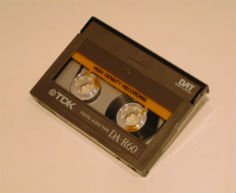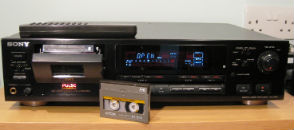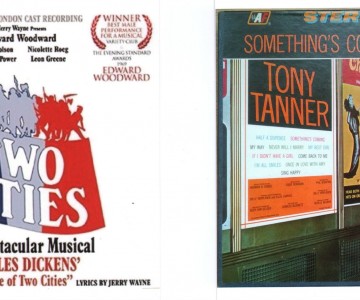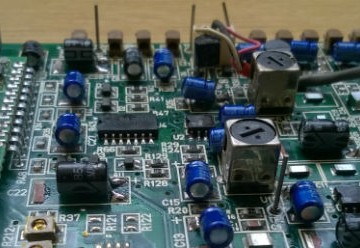01277 225316 info@audiorestored.com
Digital Audio Tape (DAT) Transfer to CD | Audio Restored

Prices
| DAT Cassette (less than 15 mins) | £25 / DAT | |
| DAT Cassette (up to 90 mins) | £40 / DAT | |
| DAT Cassette (over 90 mins) | £45 / DAT | |
| Overcoming mould growth (if required)/fixing ‘unplayable’ DATs (where possible) | £25 / DAT | |
| Repairing damaged DATs (where tape is broken) | £20 / DAT | |
| DATs found to be blank once played | £10 / DAT |
DAT facts
- DAT cassettes can only be recorded and played in one direction (due to the rotating drum head technology)
- Playback times vary between 15 and 180 minutes in length
- These durations can be doubled if recording on a ‘long play’ deck at 32kHz
- The tape runs at 8.15mm/s for 48 and 44.1kHz sample rate recordings, whereas a 32kHz sample rate recording runs at half this speed, 4.075 mm/s
- DAT can produce perfect ‘clones’ of CDs and other digital sources as it uses a ‘lossless’ recording system
- Sub-codes are embedded into the signal data which record start and end times to allow for indexing and fast-seeking
Transfer Details
To ensure the best accuracy of sound from your DAT recordings, an all-digital signal path is employed. If your recordings were made at 48kHz and you wish to retain this higher sampling rate, just let us know, and we will return your transfer as a higher resolution data file on a memory stick or file upload.
Digital Audio Tape was developed by Sony and introduced in 1987 as a potential successor to analogue compact cassettes for sound recording and playback, although this aim was never fully realised in practice.
 It is a tape-based digital signal recording and playback medium using 4mm wide tape. Like videocassettes, DAT is based on the technology of tape passing over a rotating drum head allowing a helical scan to record data. Recordings are commonly made at 32, 44.1 or 48 kHz sampling rates at 16 or 18 bit resolution.
It is a tape-based digital signal recording and playback medium using 4mm wide tape. Like videocassettes, DAT is based on the technology of tape passing over a rotating drum head allowing a helical scan to record data. Recordings are commonly made at 32, 44.1 or 48 kHz sampling rates at 16 or 18 bit resolution.
DAT found its niche in professional recording studios in the 1990s, but nowadays is becoming less common due to the prevalence of hard-disk recording technology. DAT was not widely adopted by the domestic market either, mainly due to the cost of the format. However, many recordings do still exist, but are becoming difficult to play.
Mould growth – this is a common problem with DAT tapes which have been stored for a long time in less than ideal conditions – usually mould is seen as white spots on the tape reel. If played in this condition (or fast-forwarded/rewound) there is a real chance that mould spots can initiate a tear across the tape, rendering it irreparable at that point, meaning that the content at the tear point is lost. Digital tape cannot be spliced like analogue tape, so it is imperative to make sure there are no signs of mould on both sides of the tape reel. For this reason, all DATs are opened and both sides of the tape reel inspected carefully. If there is no sign of mould growth, the tape is returned to the shell and transferred as normal. However, if there is any sign of mould, the tape has to be gently unspooled by hand onto a clean surface – this inevitably reveals multiple sticking points as the tape comes away. A fine brush is used to tease the sticking tape away from the reel, and when all the tape has been treated in this way, it is carefully rewound by hand onto the reel using a specially adapted empty DAT case. Only then can the DAT be fast-forwarded/rewound and played with total confidence. A modest charge is made for this preventative service (see prices table).

Sony DTC-690 DAT Recorder
DAT transfers are performed using a Fostex D-20 professional timecode master recorder, operating at a sampling rate of either 44.1 or 48 kHz.
The lower sampling rate of 32kHz (long-play recordings) are transcribed using a Sony DTC-690 deck.
Individual songs are separated to give full track skip/search functions. If a CD is required, CD text and on-CD printing are added for convenience, and your disc is returned to you in a clear, flexible vinyl sleeve. Alternatively, high res .wav files can be uploaded to your web address using ‘We Transfer‘.
Other file formats (FLAC, .mp3) can also be accommodated if preferred.
Contact us to discuss your requirements fully.



